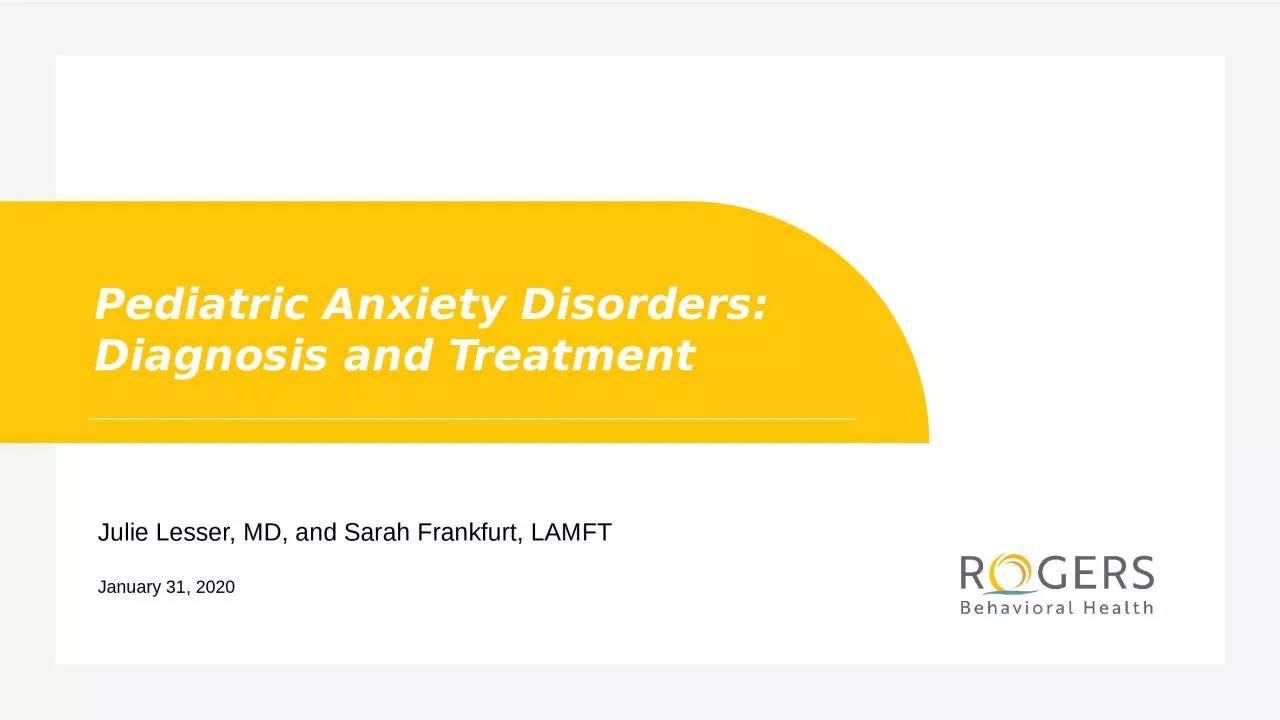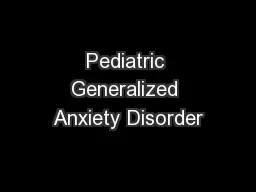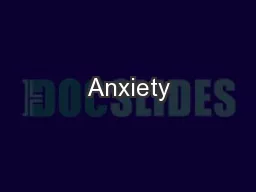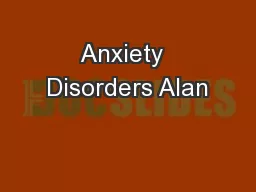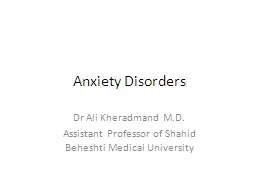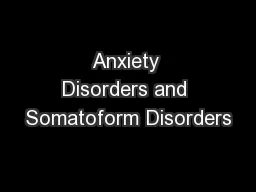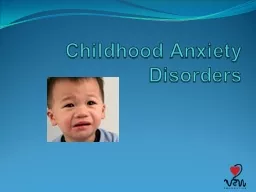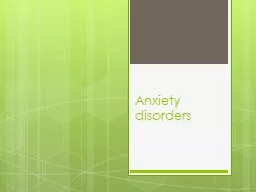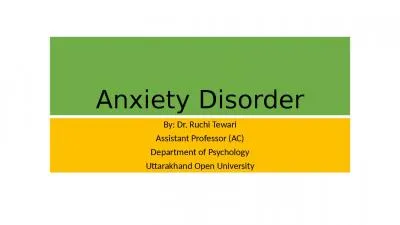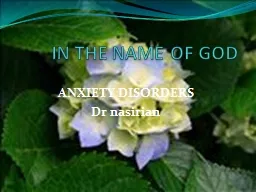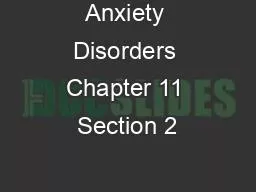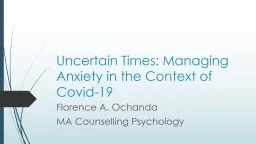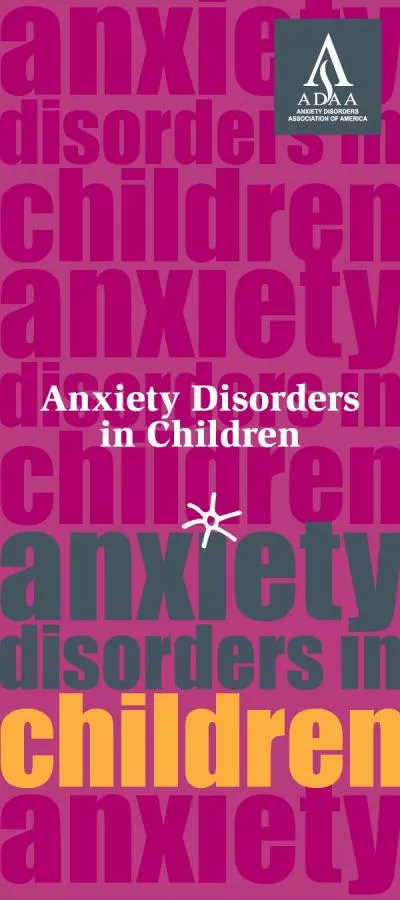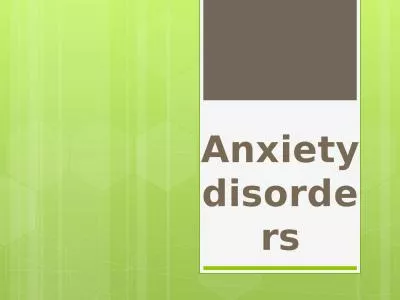PPT-Pediatric Anxiety Disorders:
Author : wang | Published Date : 2022-06-14
Diagnosis and Treatment Julie Lesser MD and Sarah Frankfurt LAMFT January 31 2020 Objectives Provide an overview of the epidemiology and diagnosis of anxiety disorders
Presentation Embed Code
Download Presentation
Download Presentation The PPT/PDF document "Pediatric Anxiety Disorders:" is the property of its rightful owner. Permission is granted to download and print the materials on this website for personal, non-commercial use only, and to display it on your personal computer provided you do not modify the materials and that you retain all copyright notices contained in the materials. By downloading content from our website, you accept the terms of this agreement.
Pediatric Anxiety Disorders:: Transcript
Diagnosis and Treatment Julie Lesser MD and Sarah Frankfurt LAMFT January 31 2020 Objectives Provide an overview of the epidemiology and diagnosis of anxiety disorders in children and adolescents. Also its possible for otherwise healthy people to develop severe illness so any one concerned about their illness should consult their doctor There are emergency warning signs that should signal anyone to seek medical care urgently Emergency Warning Andel. V. . Nicasio. , . MSEd. University of Central Florida. 7936 Child Psychopathology . October 23, 2013. Illustrate . the . historical evolution . of Generalized Anxiety Disorder (GAD). Review the DSM-5 taxonomy for GAD. Disorders. Source: <www.nimh.nih.gov/health/publications/anxiety-disorders/index.shtml>. Copyright © Notice: The materials are copyrighted © and trademarked ™ as the property of The Curriculum Center for Family and Consumer Sciences, Texas Tech University.. L. Podawiltz,. MS, DO. Associate Professor of Psychiatry & Behavioral Sciences (UNTHSC). The University of North Texas Health Science . Center. John Peter Smith Health . Network. What is anxiety?. Kheradmand. . M.D.. Assistant Professor . of . Shahid. . Beheshti. Medical University. When does anxiety become a disorder?. Anxiety is a normal human response to objects, situations or events that are threatening. Marion Weeks. Jenks High School. Anxiety Disorders in general. Diagnosis occurs when overwhelming anxiety disrupts social or occupational functioning or produces significant distress.. Manifestations of anxiety. Anxiety. Anxiety: mood state characterized by strong, negative emotion and bodily symptoms in which an individual apprehensively anticipates future danger or misfortune. Fear: immediate alarm reaction to current danger. Definition. Normal anxiety. Anxiety symptom. Anxiety disorders. generalized anxiety disorder. panic disorder . phobias. obsessive compulsive disorder. acute stress and post traumatic stress disorders. Ruchi Tewari. Assistant Professor (AC). Department of Psychology. Uttarakhand Open University. Anxiety is a normal emotion.. It’s your brain’s way of reacting to stress and alerting us of potential danger ahead.. Dr. . nasirian. Anxiety disorders are among the . most prevalent . mental disorders in the general population. . Nearly . 30 million . persons are affected in the United States, with . women. affected . Types of Anxiety Disorders. Disorders are characterized by excessive or inappropriate anxiety reactions.. Major types. Phobias. Panic disorder. Generalized anxiety disorder. Obsessive-compulsive disorder. Florence A. . Ochanda. MA Counselling . Psychology. Webinar: Uncertain times: Managing Anxiety. Introduction. Understanding uncertainty. Features and impact of uncertainty. Understanding how uncertainty fuels anxiety. Anxiety disorders areThey are characterized by persistent, irrational, and overwhelming worry, fear, and anxiety that interfere with daily activities. These are real disorders that affect how the brai Anxiety is a normal response to stressful or fearful circumstances causing activation of neurobiological systems that allows an individual to adapt or manage the stressful situation.. Anxiety disorder occur when the anxiety is excessive leading to irrational.
Download Document
Here is the link to download the presentation.
"Pediatric Anxiety Disorders:"The content belongs to its owner. You may download and print it for personal use, without modification, and keep all copyright notices. By downloading, you agree to these terms.
Related Documents

